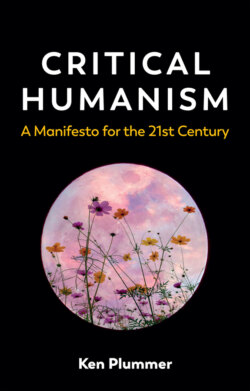Читать книгу Critical Humanism - Ken Plummer - Страница 18
Box 1.1: Connecting humanity: the critical humanist project
ОглавлениеCritical humanism suggests an opening eight-point agenda to get us going. I explore all these in the chapters that follow.
1 Critical humanism What is this thing called ‘critical humanism’? Why do we need it? Where is it heading? What are its challenges?
2 Damaged humanity How have we come to construct such a mutilated, disconnected world? How might we repair it?
3 Divided humanity Why is humanity so divided? How can we learn to live well together with our amazing and vast array of differences?
4 Traumatized humanity How can we make sense of the atrocities of our past? Why have we treated each other so badly and with such cruelty? How can we build narratives and institutions of reconciliation, justice, truth and accountability with one another?
5 Narrative humanity How has humanity been assembled through narrative? We have become the distinctive, even distinguished, storytelling animal. So how can we cultivate stories that will encourage a better future, a flourishing world? Can there be a narrative of worldwide connection?
6 A valuing humanity How have we built a long and distinguished history of human values? We have become the distinctively ‘moral animal’ that dwells in a culture with ‘values for living’. Can there be worldwide values that will bring us together?
7 Transformative humanity What kind of futures do we want? We have become the creative creatures: we bring new things into the world. Can we create ways of making a better future that will connect all peoples, life and the earth?
8 A politics of humanity How can we act in the world to bring about change? How can we use creative political actions to bridge the local and the universal? And reconnect us all to earth, life, world and the cosmos. Can we create a globalization of better worlds for all?
Critical humanism establishes a politics of humanity. It asks (a) How can we reduce the human harm and hazards in the world, especially for the vulnerable, exploited and marginal? (b) How can we connect lives to the continuity and richness of the earth we live on? (c) How can we build creative and flourishing human worlds for all?
We look for harm reduction, connectivity, flourishing.
Critical humanism becomes both a worldly project of human connectivity and a global narrative that expands on this. It claims a critical stance by appreciating that humanity and humanism act as a narrative that shifts over time and space, bringing about historically grounded ‘projects’ as humans go in search of meaning. It can never be a pure universal constant. But it will most surely show slender threads of ‘fallible continuities’ – ways of making broad but tentative connections. There is no fixed meaning of humanism or humanity: they operate as a narrative that draws from a widely held pragmatic view of the workability, yet fallibility, of the everyday world.8
The idea of humanism is not always seen in quite this way. (More commonly it is seen as a fixed universal linked to some version of human nature.) But I think this more critical, long narrative view is helpful: it shows how the very idea of humanity and humanism, indeed the words themselves, signifies changing historical understandings developed in different contexts by different groups. What is claimed to be human at one moment in history may not be so claimed at another, even if slender threads hold them together. Our narratives are multiple in form, producing claims that are contested by (usually political) groupings. In all this, I draw from both classical humanism and a humanist sociology, but move beyond them.
Ultimately, I argue that the narrative of humanity is a changing, multilayered and plural idea. It introduces a value struggle over what it means to be a human being. Always diverse, it recognizes the need for a cooperative mutuality that will connect us all in the sharing of a universal planet. Some kind of ‘common ground’ has to be found to create visions of life and a future. We need some kind of global human imagination, practice, aesthetics, ethics and politics to go with it. ‘We’ (and by this I mean, rather immodestly, you, me and the whole damned human world) have to move through our differences. We have to find some of the things we can agree on. And this is a key theme of this book. Critical humanism seeks a narrative for the betterment of a global humanity, in all its rich connected diversity, by enhancing the world for all in each generation. This just might be a commonality worth trying for. We need here to think and talk, a little, like a planet.
The critical humanist imagination moves from a unique, but limited, little human being towards a vision of a collective way of ‘living with difference’ – of all being valued and connected to a wider planetary world. It moves back and forth between the biological and the cosmic, the local and the global, from personal sufferings to political transformation. It is grounded in a paradox: while it recognizes just how fragile, contested and divided our humanity is, it also challenges us to ask how we human beings can build a world of shared common humanity that enables us all to flourish and live well with each other and our differences.
